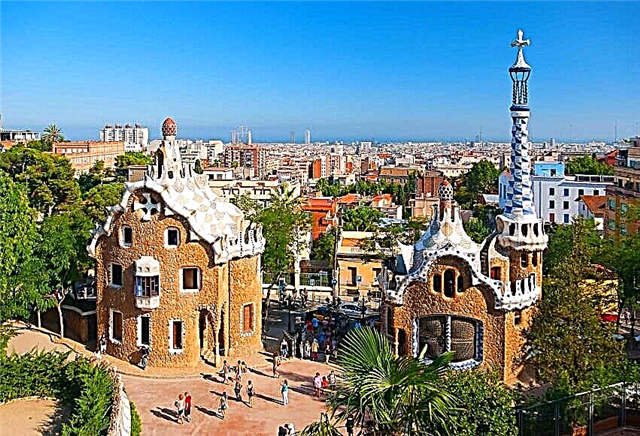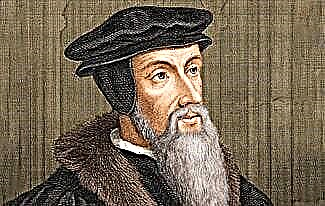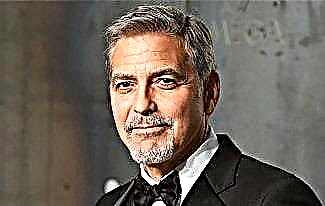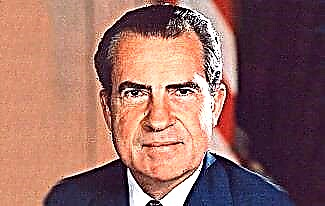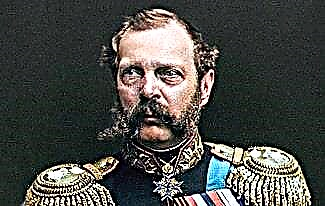Abu Ali Hussein ibn Abdullah ibn al-Hasan ibn Ali ibn Sinaknown in the West as Avicenna - a medieval Persian scientist, philosopher and physician, a representative of Eastern Aristotelianism. He was the court doctor of the Samanid emirs and the Dalemit sultans, and also for some time was the vizier in Hamadan.
Ibn Sina is considered the author of over 450 works in 29 fields of science, of which only 274 have survived. The most outstanding philosopher and scientist of the medieval Islamic world.

There are many interesting facts in the biography of Ibn Sina that you probably have not heard about.
So, before you is a short biography of Ibn Sina.
Biography of Ibn Sina
Ibn Sina was born on August 16, 980 in the small village of Afshana, located on the territory of the Samanid state.
He grew up and was brought up in a wealthy family. It is generally accepted that his father was a wealthy official.
Childhood and youth
From an early age, Ibn Sina showed great ability in various sciences. When he was barely 10 years old, he learned by heart almost the entire Koran - the main book of Muslims.
Since Ibn Sina had an impressive knowledge, his father sent him to school, where Muslim laws and principles were deeply studied. However, the teachers had to admit that the boy was much better versed in a variety of issues.
An interesting fact is that when Ibn Sina was only 12 years old, both teachers and local sages came to him for advice.
In Bukhara, Avicenna studied philosophy, logic and astronomy with the scientist Abu Abdallah Natli who came to the city. After that, he independently continued to acquire knowledge in these and other areas.
Ibn Sina developed an interest in medicine, music and geometry. The guy was greatly impressed by Aristotle's Metaphysics.

At the age of 14, the young man researched all the works available in the city, one way or another related to medicine. He even tried to treat especially sick people in order to apply his knowledge in practice.
It so happened that the emir of Bukhara fell ill, but none of his doctors could cure the ruler of his illness. As a result, the young Ibn Sina was invited to him, who made the correct diagnosis and prescribed the appropriate treatment. After that he became the personal physician of the emir.
Hussein continued to gain knowledge from books when he gained access to the ruler's library.
At the age of 18, Ibn Sina possessed such deep knowledge that he began to freely discuss with the most famous scientists of the East and Central Asia by correspondence.
When Ibn Sina was only 20 years old, he published several scientific works, including extensive encyclopedias, books on ethics, and a medical dictionary.
During that period of his biography, Ibn Sina's father died, and Bukhara was occupied by Turkic tribes. For this reason, the sage decided to leave for Khorezm.
Medicine
Having moved to Khorezm, Ibn Sina was able to continue his medical practice. His successes were so great that the locals began to call him "the prince of doctors."
At the time, the authorities forbade anyone to dissect corpses for examination. For this, the violators faced the death penalty, but Ibn Sina, along with another physician named Masihi, continued to engage in autopsy in secret from others.

Over time, the Sultan became aware of this, as a result of which Avicenna and Masikhi decided to flee. During their hasty escape, the scientists were hit by a violent hurricane. They went astray, hungry and thirsty.
The aged Masihi died, unable to endure such trials, while Ibn Sina only miraculously survived.
The scientist wandered for a long time from the persecution of the Sultan, but still continued to engage in writing. An interesting fact is that he wrote some of the works right in the saddle, during his long journeys.
In 1016 Ibn Sina settled in Hamadan, the former capital of Media. These lands were ruled by illiterate rulers, which could not but rejoice the thinker.
Avicenna quickly got the post of chief physician of the emir, and later was awarded the post of minister-vizier.
During this period of biography Ibn Sina managed to complete the writing of the first part of his main work - "The Canon of Medicine". Later it will be supplemented with 4 more parts.

The book focused on describing chronic diseases, surgery, bone fractures, and drug preparation. The author also talked about the medical practices of ancient doctors in Europe and Asia.
Curiously, Ibn Sina determined that viruses act as invisible pathogens of infectious diseases. It is worth noting that his hypothesis was proved by Pasteur only 8 centuries later.
In his books, Ibn Sina also described the types and states of the pulse. He was the first physician to define such serious diseases as cholera, plague, jaundice, etc.
Avicenna made a great contribution to the development of the visual system. He explained in every detail the structure of the human eye.
Until that time, Ibn Sina's contemporaries thought that the eye was a kind of flashlight with rays of a special origin. In the shortest possible time, the "Canon of Medicine" became an encyclopedia of world significance.
Philosophy
Many works of Ibn Sina have been lost or rewritten by uneducated translators. Nevertheless, a lot of the scientist's works have survived to this day, helping to understand his views on certain issues.

According to Avicenna, science was divided into 3 categories:
- Highest.
- Average.
- The lowest.
Ibn Sina was one of the number of philosophers and scientists who considered God as the beginning of all principles.
After determining the eternity of the world, the sage deeply considered the essence of the human soul, which manifested itself in various guises and bodies (like an animal or a person) on earth, after which it returned to God again.
Ibn Sina's philosophical concept was criticized by Jewish thinkers and Sufis (Islamic esotericists). Nevertheless, Avicenna's ideas were accepted by many people.
Literature and other sciences
Ibn Sina often talked about serious matters through versification. In a similar manner he wrote such works as "A Treatise on Love", "Hai ibn Yakzan", "Bird" and many others.
The scientist made a significant contribution to the development of psychology. For example, he divided the character of people into 4 categories:
- hot;
- cold;
- wet;
- dry.
Ibn Sina achieved considerable success in mechanics, music and astronomy. He was also able to show himself as a talented chemist. For example, he learned how to extract hydrochloric, sulfuric and nitric acids, potassium and sodium hydroxides.
His works are still being studied with interest all over the world. Modern experts are surprised at how he managed to reach such heights while living in that era.
Personal life
At the moment, biographers of Ibn Sina know practically nothing about his personal life.
The scientist often changed his place of residence, moving from one locality to another. Whether he managed to start a family is difficult to say, so this topic still raises many questions from historians.
Death
Shortly before his death, the philosopher discovered a serious stomach illness from which he could not cure himself. Ibn Sina died on June 18, 1037 at the age of 56.
On the eve of his death, Avicenna ordered the release of all his slaves, rewarding them, and distributing all his fortune to the poor.
Ibn Sina was buried in Hamadan next to the city wall. Less than a year later, his remains were transported to Isfahan and reburied in the mausoleum.
Images of Ibn Sina





